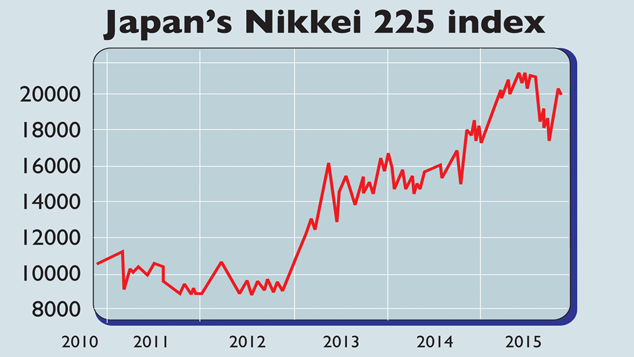
Japan is in recession for the fifth time in seven years. The economy shrank at an annual pace of 0.8% in the third quarter. There was a similar slide between April and June. That puts Japan in a technical recession. Yet “under the hood, the Japanese economic engine is sputtering less” than it seems, notes The Economist. Its potential growth rate is only a little above zero, because its working-age population is falling by around 1% a year, so it doesn’t take much of a dip for growth to go negative.
America’s potential growth rate, on the other hand, is around 2%. “It is as if the US is a couple of metres away from the swimming pool but Japan is walking along the edge and needs only a slight nudge to fall in,” says Robin Harding in the Financial Times.
Besides, as various analysts have noted, two areas that have struggled recently, net exports and consumption, which account for around 60% of GDP between them, both rose. The latter notched up an annual gain of 2.1% in the third quarter. Unemployment is just 3.4% and should keep falling – the number of jobs available per jobseeker is at a 23-year high. That implies higher wages and spending.
Moreover, says Lex in the FT, the money-printing spree we have seen in recent years under Prime Minister Shinzo Abe has lit a rocket under corporate profits as the yen fell, with exporters doing especially well. The hope now is the “flood of money will eventually shift the pattern of growth in a more domestic direction”. The economy should see more corporate investment, “as well as freer-spending households”. Meanwhile, stripping out energy prices, inflation is around 1% a year.
This is why the Bank of Japan didn’t feel the need to step up quantitative easing (QE) . It has already printed money worth around 70% of GDP. The US and UK’s QE programmes were worth a respective 25% and 20%. There has also been gradual progress on structural reforms to boost productivity and potential growth.
The government has pushed for more women to enter the workforce and signed up to the Trans-Pacific Partnership, a free-trade deal that should open up sectors such as agriculture to more competition. A new corporate governance code has made firms more shareholder-friendly. A slowly improving economy, reasonable valuations and plenty of liquidity means Japan’s stockmarket remains a buy.